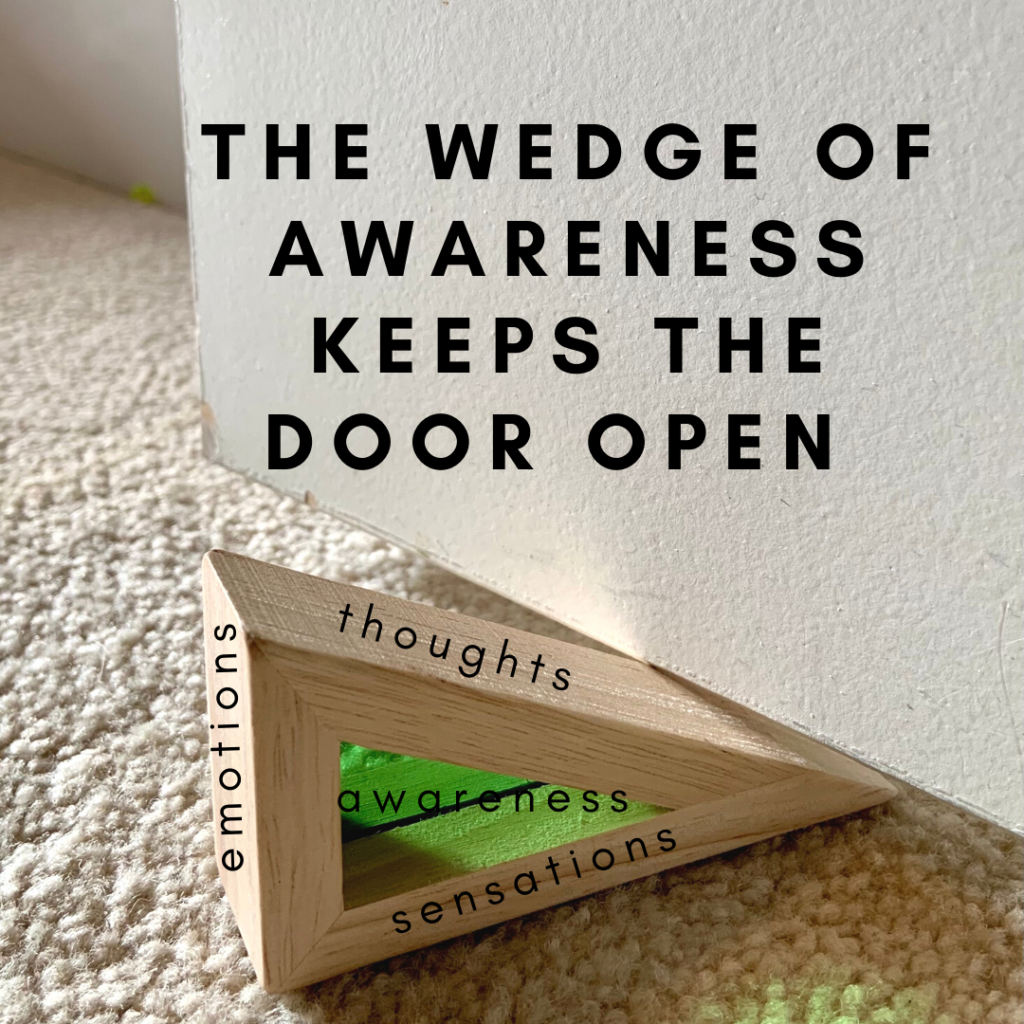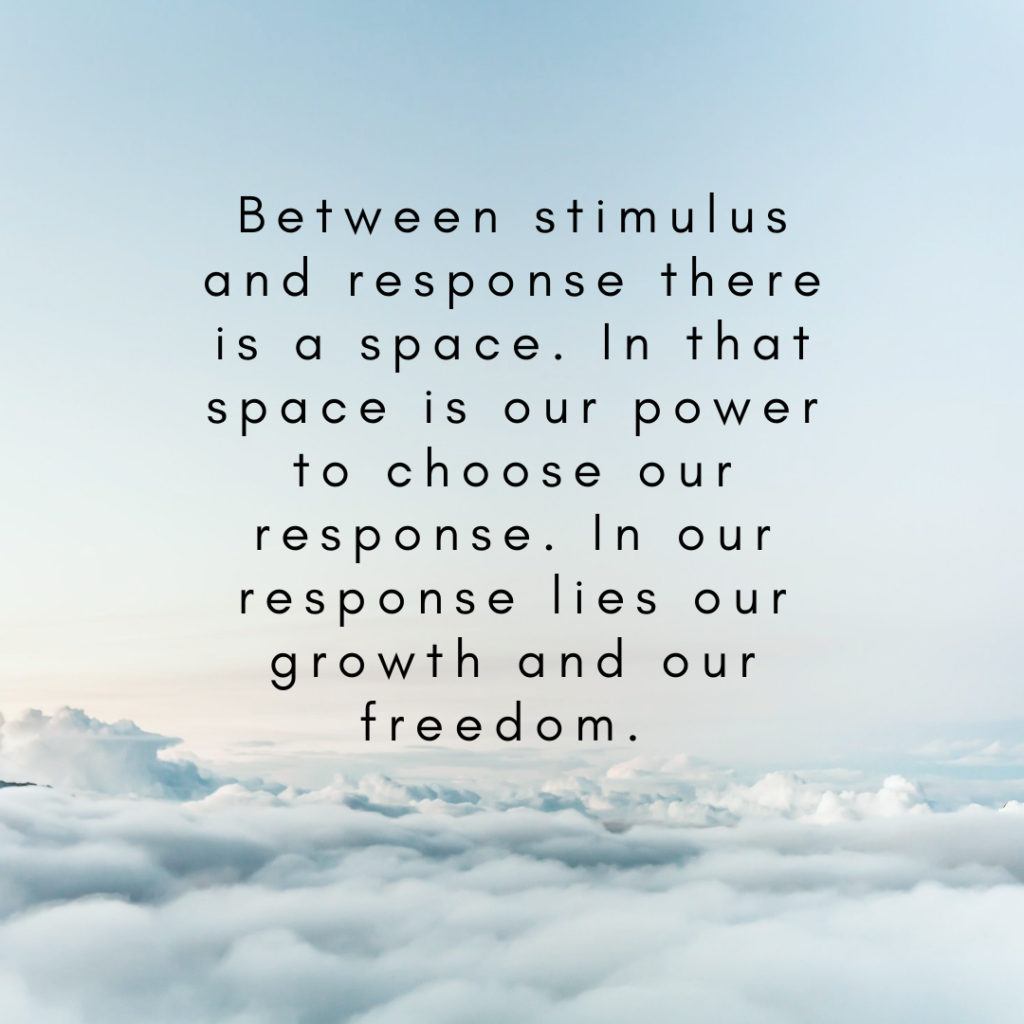The wedge of awareness is another metaphor that has stuck with me over the years after the MBSR class I took. I find that metaphors get imprinted as images and stories making them easier to recall.
In my previous post about the 3 strings of awareness, the metaphor of a separating a jumbled ball of string reveals: thoughts, emotions, and sensations. So what’s the purpose of being more aware of what’s happening internally? I’m not the kind of person who likes to look inward. I’d rather ignore and keep doing what I usually do. Auto-mode can be useful as it simplifies our life, but sometimes it can cause problems. When a stimulus enters, we often react automatically according to our past patterns and learned history.

The metaphor of the wedge is that thoughts, emotions, and sensations each form the sides of the wedge, which is a triangle. Inside that triangle is Awareness and it acts like a door stop. The door stop keeps the door open between the stimulus and reaction and that space helps you to have time to respond instead of react.
Do you notice how our body is often in autopilot? When I switched the location of the towel rack in the bathroom, my body automatically reached out to the old location. It took several days where I had to pause and think about where I moved the towels, then was able to orient myself to the new location.

Think of the wedge of awareness as a door stop that wedges itself between the stimulus and reaction (like the image above), so that instead of reacting there is time and space to have a response. For example, I’ve learned that my pattern of reacting to loud talking is to avoid the situation. My autopilot is:
stimulus (loud noise) ➡️ reaction (flee)
If I take a closer look at what’s happening inside of me:
- Thoughts: Somebody is mad and I’m probably in trouble
- Emotions: I feel fear and uncomfortable
- Sensations: My body feels tense
Ok so looking inwards still isn’t that rosy, but the wedge of awareness gives me more space about how I will choose to respond to the situation. Maybe the fear I feel isn’t valid in this particular situation and I can choose to stay and learn that people are just having an excited conversation. Or maybe the fear I feel is valid and I don’t feel comfortable in the situation, so I make a conscious decision to remove myself. This is just a simple example from my life about how a reaction can turn into a response. I’ve been told by young people how a simple pause (even 5 seconds) helped them to pivot from wanting to throw a punch to choosing to walk away.

The space between what happens to us and our response, our freedom to choose that response and the impact it can have on our lives, beautifully illustrate that we can become a product of our decisions, and not our conditions. They illustrate the three values that Frankl continually taught: the creative value, the experiential value, and the attitudinal value. We have the power to choose our response to our circumstances.
Stephen R. Covey





